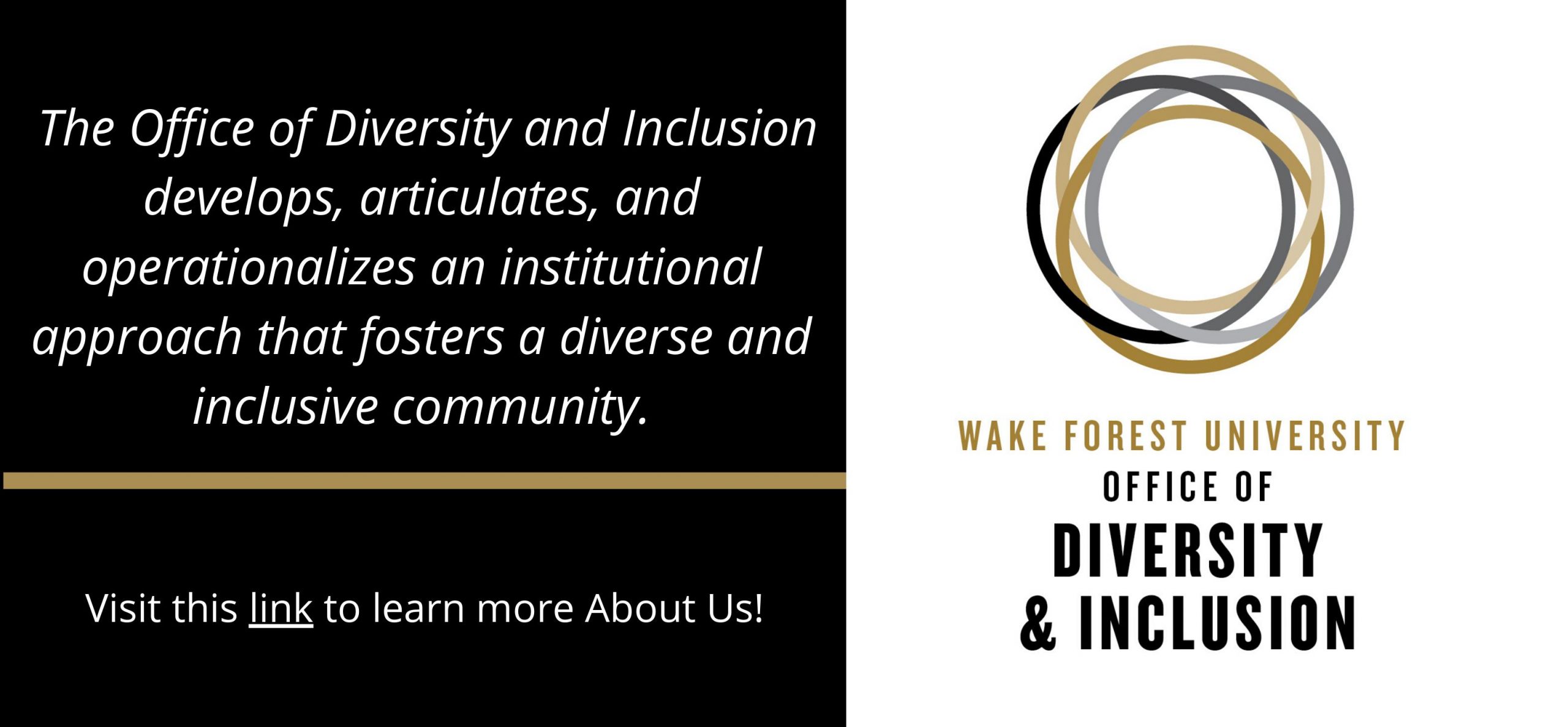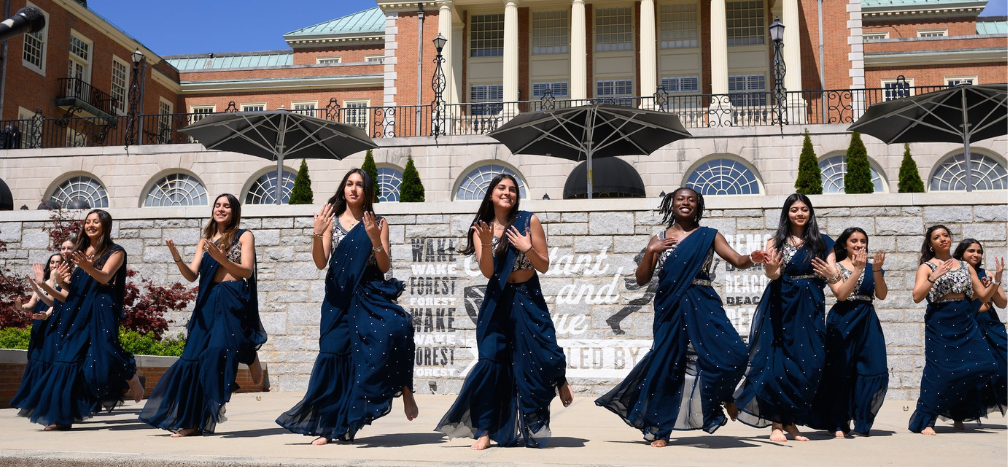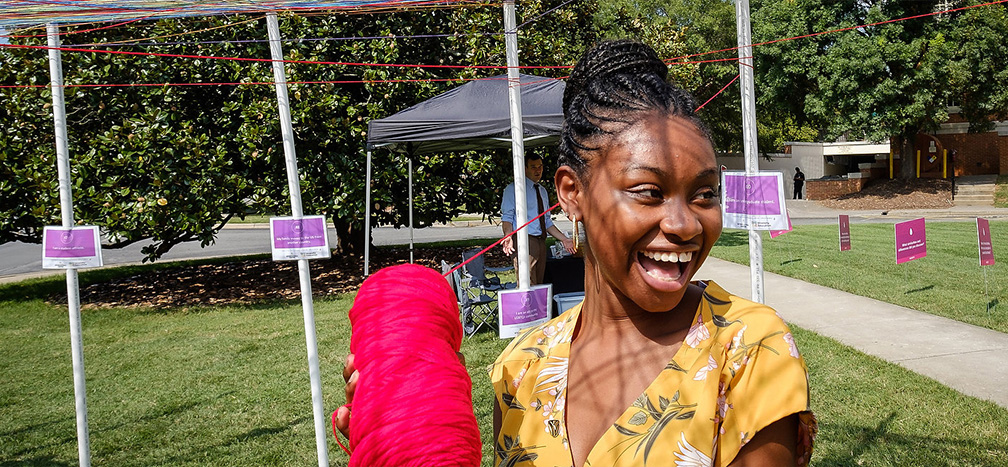Let us Strive to Create and Sustain Community and Belonging
The Office of Diversity and Inclusion supports the University’s mission of creating a more diverse learning community. Developmental and proactive in its approach and reactive to the constant challenges to inclusion and belonging in our community and our society, ODI organizes its efforts around offering compelling and representative programming, and ensuring that all Wake Foresters have an opportunity to benefit from all that Wake Forest has to offer.
These efforts promote a safe, growth-minded, and engaged campus community, wherein students, staff, and faculty – within and across multiple identities – can feel supported and valued in their academic, social, and professional endeavors.
Summer ’25
Re-envisioning Updates
On May 28, 2025, the ODI Re-envisioning Steering Committee was charged with guiding the summer-long announcement by VP Villalba to, among other topics, create a new vision, mission, and conceptual framework for sustaining community and belonging at Wake Forest.
To stay informed about all updates and learn how to engage with re-envisioning efforts, please visit this link.
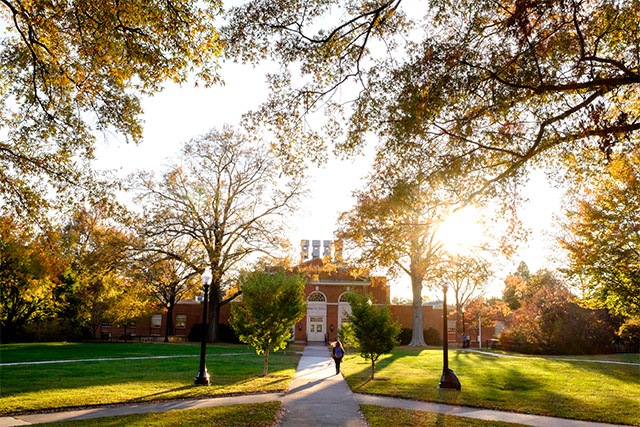
Core Centers
Affiliate Centers
Our partnerships across campus help further the vision for diversity, equity, and inclusion.
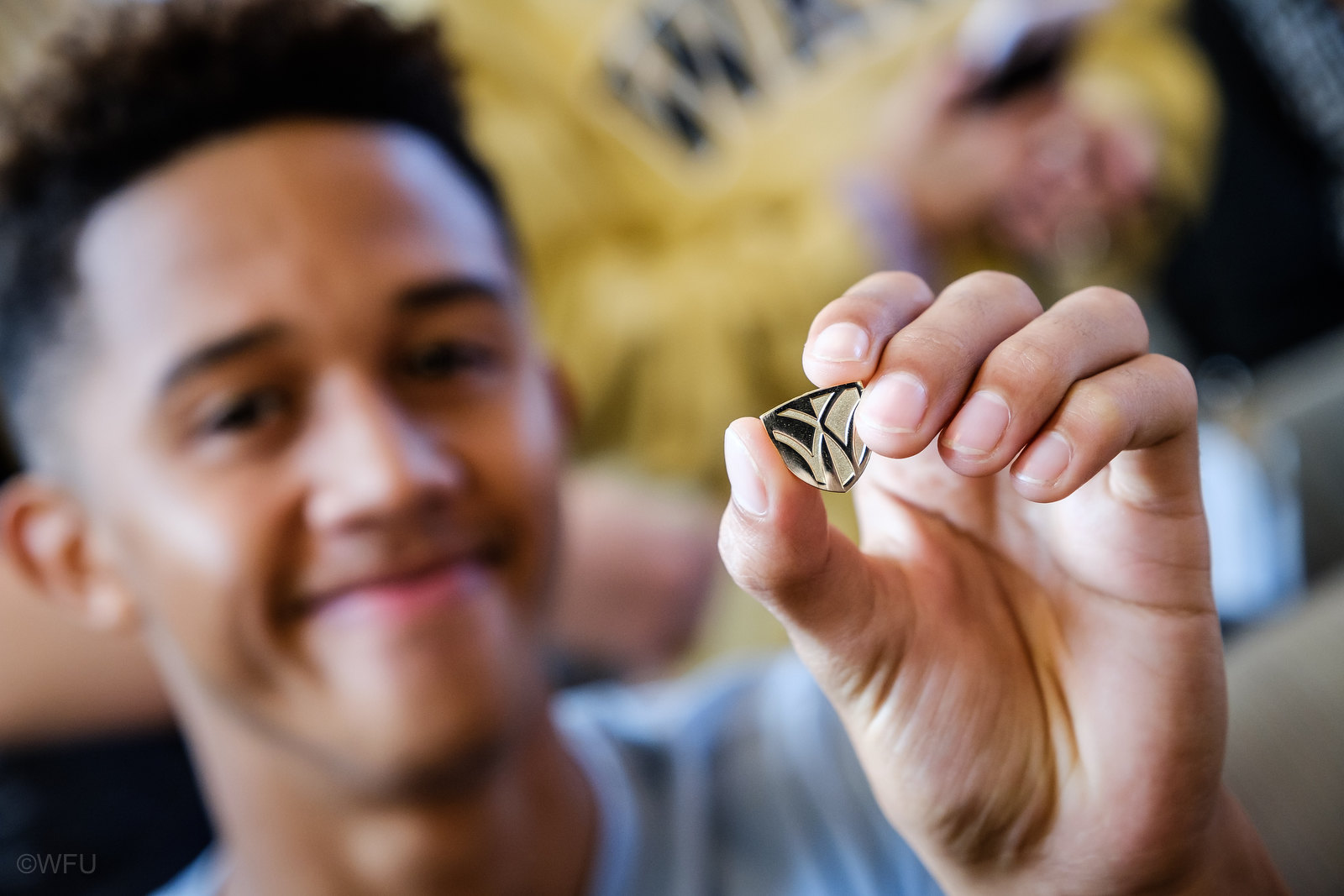
ODI Educational Offerings
Professional development opportunities for diversity, equity, and inclusion are available to all Wake Forest students, staff, and faculty.
Register and learn more about our collection of signature programming.
Upcoming Events
-
 June 2, 2025
June 2, 2025
Wake WashingtonThe Wake Forest University Environmental and Epistemic Justice Initiative (EEJI) is a multi-pronged Mellon Foundation funded research, teaching, and community engagement project that places at its center environmental and epistemic justice. The EEJI critically examines how and in what ways race and regimes of racial knowledge shape and inform our …
Follow Us on Instagram!
Thank you to everyone who gave! Your support helps...




